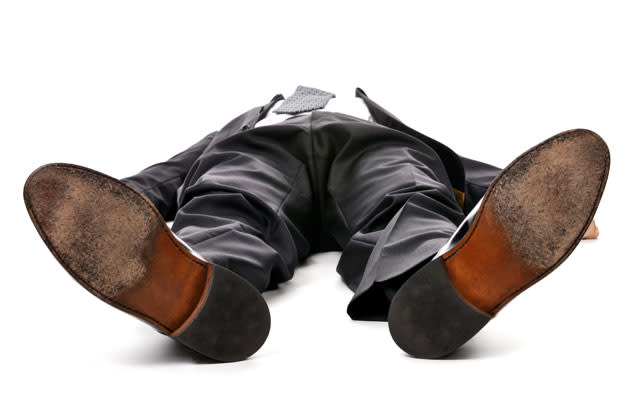First aid tip: How to help when someone faints
First aid tip: How to help when someone faints

Watching a sitcom character faint is often amusing. But in real life, fainting (also known as syncope) isn't a laughing matter as it may suggest an underlying medical problem.
Dr Shah Mitesh and Dr Ian Phoon, Family Physicians from SingHealth Polyclinics, members of the SingHealth group, provide insight into what causes fainting and what to do if a loved one faints.
How does fainting (syncope) happen?
Fainting generally refers to a momentary loss of consciousness. This generally occurs when the brain doesn't receive enough oxygen, blood or sugar. In the case of fits, fainting is due to a surge of electrical impulses originating from the brain.
The typical fainting spell is the result of the body overreacting to certain triggers, such as the sight of blood or extreme emotional distress. This is called a "vasovagal syncope".
During such an episode, the vagal nerve (from the brain) causes the heart rate and blood pressure to drop, reducing blood flow to the brain. Since blood carries oxygen to the brain, this deprives the brain of oxygen, leading to a "black-out".
When someone faints, the body typically goes from a standing to a lying position. This helps the blood to flow to the brain since the blood doesn’t need to be pumped against gravity. The person will often regain consciousness spontaneously after a few minutes.
Related article: Feeling dizzy or faint frequently? You may have low blood pressure.
How serious is fainting?
Most cases of fainting are benign, but this should never be assumed. Syncope could mean a serious – even potentially fatal – condition such as irregular heartbeats, epilepsy, very low blood sugar, sudden blood loss or cardiac arrest. If you lose consciousness, you should be properly assessed by a medical practitioner.
What should I do if I see someone faint?
Contrary to what you've seen on the television or in movies, there's no need to slap or shake the person or splash water on them. Once the brain receives sufficient nutrients, the person will automatically regain consciousness.
The best way you can provide assistance would be to familiarise yourself with CPR (cardio-pulmonary resuscitation) or the use of the AED (Automated External Defibrillator) – a portable electrical device that detects dangerous heart rhythms and delivers a current to "shock" the heart back into normal rhythm if there's a need to.
Related article: Why people with irregular heartbeat may need a pacemaker implant
In CPR, remember the acronym D-R-S-A-B-C:
D (Danger) – Ensure the area is safe for yourself and the person requiring help.
R (Response) – Check for a response from the person you're helping (e.g. ask "What's your name?" and "Are you ok?" ) If there's no response, call for help immediately. If there's a response, help to make the person more comfortable.
S (Shout for help) – Shout for help or ask someone to call 995 for an ambulance.
A (Airway) – Check the person's airway to ensure there's no blockage.
B (Breathing) – Check for breathing. If breathing is not normal, begin CPR. If breathing is normal, continue to monitor breathing and check for injuries.
C (Circulation) – Check for the pulse. Usually, if there's no breathing, it can be assumed that there's also no pulse, and CPR should begin: 30 chest compressions for every 2 breaths. Perform CPR until help arrives or the person recovers.
Related article: 4 more ways to help someone who has fainted and what to do if you start feeling faint
Get more health tips at HealthXchange.com.sg and sign up for our FREE e-newsletter.
By Alvin Chumari for HealthXchange.com.sg.
Articles on HealthXchange.com.sg are meant for informational purposes only and cannot replace professional surgical, medical or health advice, examination, diagnosis, or treatment.

